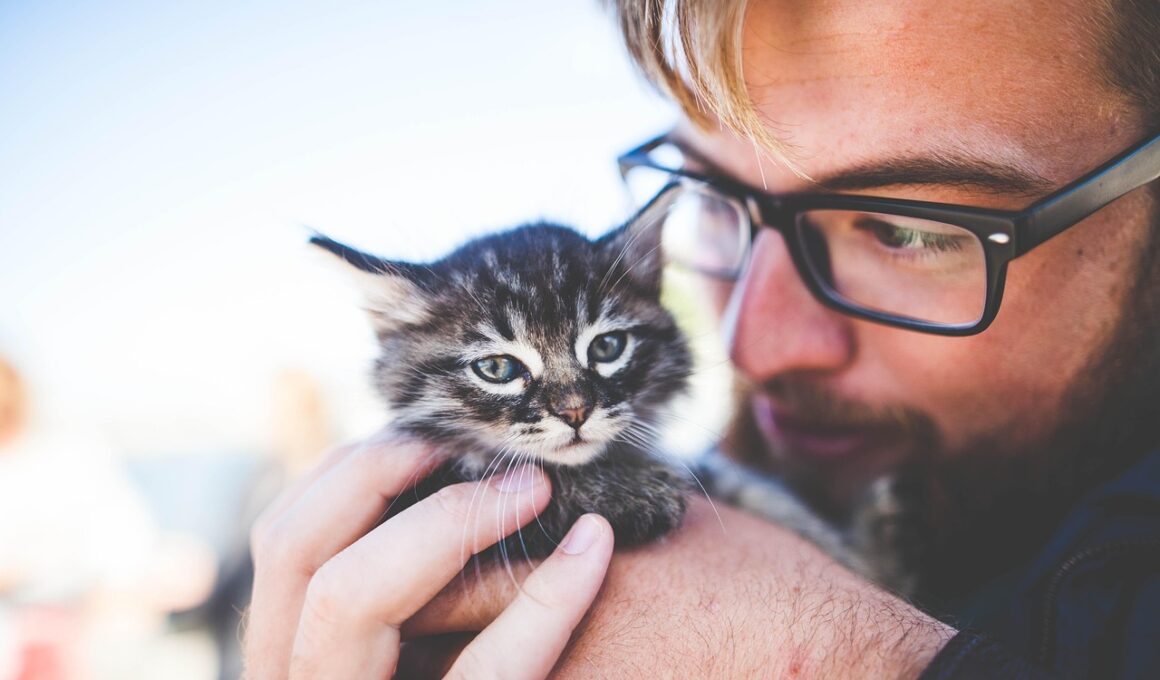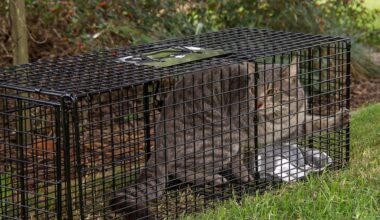The Role of Play in Introducing Kittens to Other Animals
Introducing a kitten to other pets can be a daunting task, yet play can significantly ease this process. Kittens are innately playful creatures who utilize social play as a means to bond with their peers. When a new kitten enters a home with existing pets, it’s essential to establish a safe and friendly environment. Initial interactions should be carefully managed to ensure both the kitten and the resident animals feel secure. A gradual approach is recommended, allowing both parties to observe each other from a distance before coming into close contact. Keeping interactions positive can encourage curiosity and reduce the chances of stress or aggression. Utilize playtime as a tool by engaging all pets in games that allow them to interact without direct confrontation. Toys are fundamental in these introductory sessions, offering a distraction and a source of shared enjoyment. Feather wands, balls, and laser pointers can inspire fun while relieving anxiety. Remember to supervise interactions closely, and make sure each pet has a retreat to claim when they need a break. With patience and understanding, fostering a peaceful dynamic is attainable through play.
The benefits of play extend beyond mere amusement, as it serves as significant socialization for kittens. When kittens engage in social play, they learn critical social skills including body language and boundaries, essential for harmonious relationships with other pets. Playful interactions allow kittens to develop essential fighting skills, teaching them when to engage and when to retreat. Moreover, this form of play helps to establish a hierarchy among the pets, determining how they will relate to one another in the future. Moreover, positive shared experiences during play contribute to building trust. As kittens and other animals learn to respect each other’s space through safe play, future interactions become less intimidating. It’s vital to guarantee every participant is comfortable and willing during play sessions. Observing how animals react during these playful encounters can provide insights into their personalities. If one animal seems hesitant or fearful, it’s crucial to respect their feelings and take a step back. The goal is to create an environment filled with trust, so patience is paramount. Using play effectively will provide significant benefits to the introduction process and ensure long-term harmony.
Types of Play to Encourage
There are various play methods to consider while introducing kittens to other pets. For example, parallel play involves both animals engaging in separate activities nearby each other. This allows them to grow accustomed to one another’s presence without direct contact. This technique can help build familiarity over time, making the eventual introduction smoother. Additionally, interactive play with toys can encourage cooperation; for instance, using toys that require both pets to work together can help create a sense of teamwork. However, it’s important to choose age-appropriate toys for both the kitten and other pets to avoid frustration. Many animals prefer solo play, especially nervous pets, so allowing them their own time is beneficial as well. It’s also useful to rotate toys regularly to maintain the excitement of play. Introducing novel items can spark interest and stimulate engagement. Furthermore, observing both pets while they play can be enlightening; one may often take the lead while the other learns to follow. This natural dynamic can set the stage for more significant interactions in the future, solidifying relationships and ensuring everyone is comfortable in their surroundings.
Creating a designated play area can enhance the introduction experience for all pets involved. A specific zone where they can engage in play helps establish boundaries, allowing each animal to feel secure in their designated space. This environment should be free from distractions, allowing pets to focus on their playtime. Incorporating climbing toys, scratching posts, and cozy resting spots ensures the area is stimulating and comfortable. Designating this zone gives the kitten a space to explore freely while also letting resident pets feel safe. It’s crucial to monitor these areas, ensuring conflicts do not arise. Specific boundaries should also be established, reminding pets that playtime must be gently regulated. The goal is to make playtiming enjoyable and memorable, emphasizing social aspects without overwhelming any animal. Regular sessions in this neutral space can enhance the overall mood, permitting the animals to bond positively. If any pet shows signs of stress or discomfort during play sessions, take the time needed to assess their feelings. Remember, a slow approach guarantees that bonds will develop naturally between pets, fostering a peaceful cohabitation environment where every animal feels respected and secure.
Signs of Healthy Interaction
Monitoring the dynamics between a kitten and other pets during playtime reveals important information regarding their relationships. Healthy play is characterized by equal participation, where both the kitten and resident pet show interest. Signs such as mutual grooming, playful pouncing, or gentle batting at each other indicate comfort and enjoyment. Additionally, watch for playful chasing; this behavior signifies trust and willingness to engage. Conversely, if one pet consistently appears frightened or withdrawn, it may be a sign to slow down the introduction process. Aggression or excessive hissing should never be ignored; these behaviors indicate a need for more space. Identifying and responding to signs of healthy versus unhealthy interactions creates an essential feedback loop for the process. Allowing time for animals to retreat and reassess the introduction is of utmost importance. Regularly assessing the way each animal acts during play provides insights into their compatibility. Ultimately, developing strong relationships is a gradual process built on mutual trust and understanding. Therefore, focusing on these signs fosters a nurturing environment where all pets can thrive harmoniously.
Incorporating treats within play sessions can enhance the introduction phase significantly. Rewarding positive interactions with treats serves as a powerful motivator, encouraging desirable behavior. For example, when both the kitten and other pets exhibit calm behavior while engaging with one another, generous rewards can reinforce that calmness. Using treats during play builds positive associations and accelerates trust between pets. However, it’s essential to control how treats are administered; ensure every pet receives equal rewards. This prevents competition and promotes fairness, reducing anxiety levels within the environment. Alongside this approach, it’s helpful to establish a routine around playtime, ensuring predictability for all pets. Animals feel more secure with established patterns, and consistent treat reinforcement can greatly enhance their experiences together. Always have high-quality, appealing treats on hand that suit each pet’s preferences. The excitement of receiving treats will keep kits and other animals engaged during play, fostering close interactions. Keeping a balanced, attentive approach ensures this method truly benefits all pets involved, leading to smooth introductions. Gradually, pets will learn to trust one another, creating a family environment filled with love and shared happiness.
Conclusion: The Path to Harmony
In conclusion, incorporating play into the introduction process when bringing a kitten into a home with existing pets is immensely beneficial. When handled thoughtfully, play can create opportunities for bonding and socialization, establishing a foundation of trust. Gradually introducing pets while focusing on their comfort allows them to acclimate to one another on their own terms. Ensuring a range of play options can help facilitate interaction while emphasizing fun. More importantly, patience and understanding will underpin success in these endeavors. Taking the time to observe how each pet interacts throughout the process aids in shaping future encounters. Over time, you can expect to see significant improvements in their relationships, founded on the dynamism of play. Building essential social skills through love, laughter, and enjoyment ultimately enriches their experiences. With consistent, intentional nurturing across play sessions, introducing a kitten to other pets can transform that initial uncertainty into lifelong friendships. Trust the process, celebrate progress, and let your pets lead the way toward harmonious cohabitation filled with joy.


